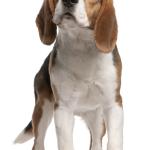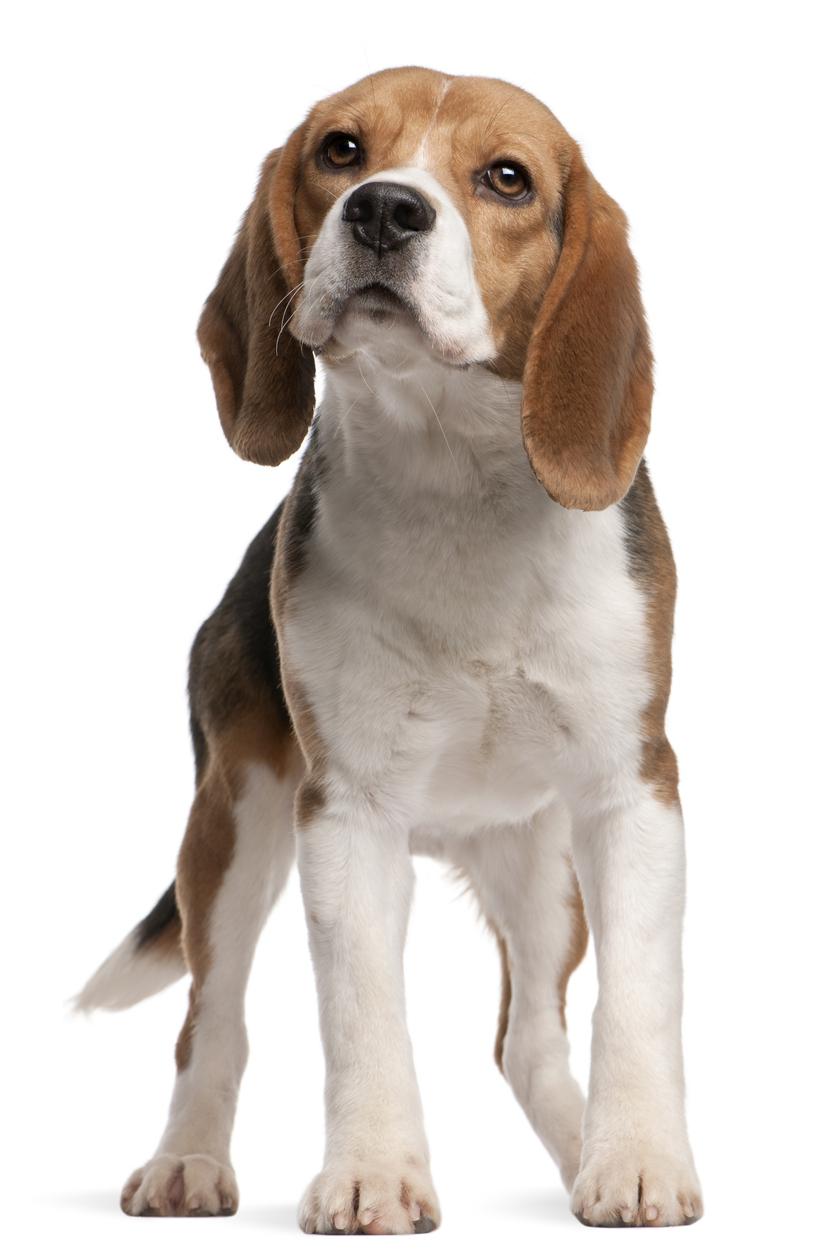Beagle

The origin of the Beagle dates back to around 5th century BC. When Xenophon, who in his Treatise on hunting with dogs, refers to a hound that might well be the first Beagle. The beagle was selectively bred to produce the tiny "pocket beagle" or "glove beagle", favored by royalty from as early as the 13th century. They got their name because they reportedly fit in the palm of a heavy leather hunting glove. They do not exist today but were greatly enjoyed by such distinguished personalities as Queen Elizabeth I.
In 1840 they were exported to the United States mainly for hunting and were not bred for domestication until 1870. The world wars were a hard blow for the continuation of the race but nothing of which they could not survive. Today, the Beagle is a breed that is not just associated for its hunting ability. They have always been faithful companions and ultimately, great members of the family.
- Europe
- United Kingdom
- Group VI
- 5-14
- 14-18
- 18-22
- 22-27
- 27-31
- More than 31
- 2-7
- 7-22
- 22-55
- 55-100
- 100-220
- 8-10
- 10-12
- 12-14
- 15-20
Physical appearance
They are a breed of great beauty and elegance. Beagles usually walk and wag their tails up forming almost an inverted "c", which gives them a proud look. They are well-proportioned dogs, with a square, muscular shape, a well-defined chest, and a long head (which is more noticeable in females). The ears are large and drooped down giving the Beagle an endearing look. As for their height and weight, the Beagle will reach about 33 or 41 centimeters in height to the cross and weighing from 8 to 16 kilograms.
The colors within the race are divided into tricolor or bicolor, always with white, brown and black tones:
- Beagle tricolor - Classic tri: A few brown and white markings but predominantly black, aka, a solid black saddle.
- Beagle tricolor - Dark tri: White base, and very soft brown marks mixed with black markings.
- Beagle tricolor - Faded tri: White base and faint black markings mixed with strong brown spots.
- Beagle tricolor - Pied: This is a broken pattern. Mostly white coats with patches of black and brown hair
- Beagle bicolor: Tan and white is the most common two color variety. But shades can range from very light brown, red, reddish, orange, strong brown and even black.
Character
Many people choose the Beagle for their physical appearance, as adults look as sweet as the puppies. However, when we make a decision as important as adopting a dog we have to know their behavior, predispositions, defects and virtues before making the right decision.
Beagles have their own character and not all personalities are compatible with us. Let's get to know them better and thus you will decide if you think you can welcome a beagle into your life.
- Beagles are very active dogs. A reasonably sized home is for them. They will run around whenever they want and can release a good chunk of their energy in a spacious home. This does not mean that they are incompatible with living in an apartment. But, if they live in a flat, you have to walk them three times a day at least, two of them long. One of 1 hour and another half-hour for your Beagle to be fully happy.
- To understand them, do not forget that they are bloodhounds, they have always been hunter dogs. Therefore, hunting for prey, barking to warn and to bring them love, is part of their usual behavior. A hunter cannot ask for permission constantly because the speed orders before they please for it sometimes, they feel the need to run away.
For these reasons, you must understand that the beagle is an active and impulsive dog. They will not blink at the idea of bringing you home prey (or in their eyes, a little gift). Also they are dogs that require thorough training. As a puppy they can become authoritarian before their owner imposes the norms of the home.
Caring for a beagle
They are usually very healthy dogs that can accompany us for 15 long years of our life, if we take care of them correctly and give them love.
They have short hair, so hair care is simple, but that does not mean that we should not maintain it. It should be brushed 2 or 3 times a week and we should bathe them once a month, always taking into account how much or little they leave the park dirty.
What we should watch closely are their ears. Large and drooping as they are, they constitute a place where dirt can be lodged. Therefore, we must pay attention when cleaning them.
Sport and exercise is fundamental. The Beagle needs great doses of activity for their physical and mental health. If we do not provide them with such, we could end up having an obese and destructive dog induced by their anxiety. Walking with them at least 3 times a day, exercising and going hill walking at weekends are qualities that the Beagle seeks from their owner.
Behavior
The beagle finds a playmate in a child. This is why families are great for beagles. They can use up much of their energy playing with children, keeping both human and dog happy. Of course, parents must set rules, since neither (both child and dog) should exceed the limits of the game.
As for pets, it is very difficult to make a value judgment of how they will behave before our cats, rabbits or birds of the house. They are hunter dogs, but if puppies are habituated to coexist with other species, good relationships can be formed. If the Beagle is an adult, a longer adaptation process may be needed, but following a pattern of coexistence, they will be able to accept them.
Training a beagle
The Beagle is an obedient and intelligent dog that develops diverse functions as a hunter or detector dog:
- Hunting: Beagles were selected to hunt hares and rabbits. They are very good hunting dogs because of their incredible tracking ability and later joined the hunting of the fox (19th century). Their ability to cooperate in a pack and their predisposition also made them participate in the hunting of the pheasant.
- Detection Dog: After discovering the qualities of the breed, the Beagle began to work as a detection dog in various and ample cases. They participate in the detection of prohibited agricultural imports and foodstuffs in quarantine around the world. The inspection and detection are tasks that the beagle performs with pleasure and eagerness to please its owners.
Beagle photos




















